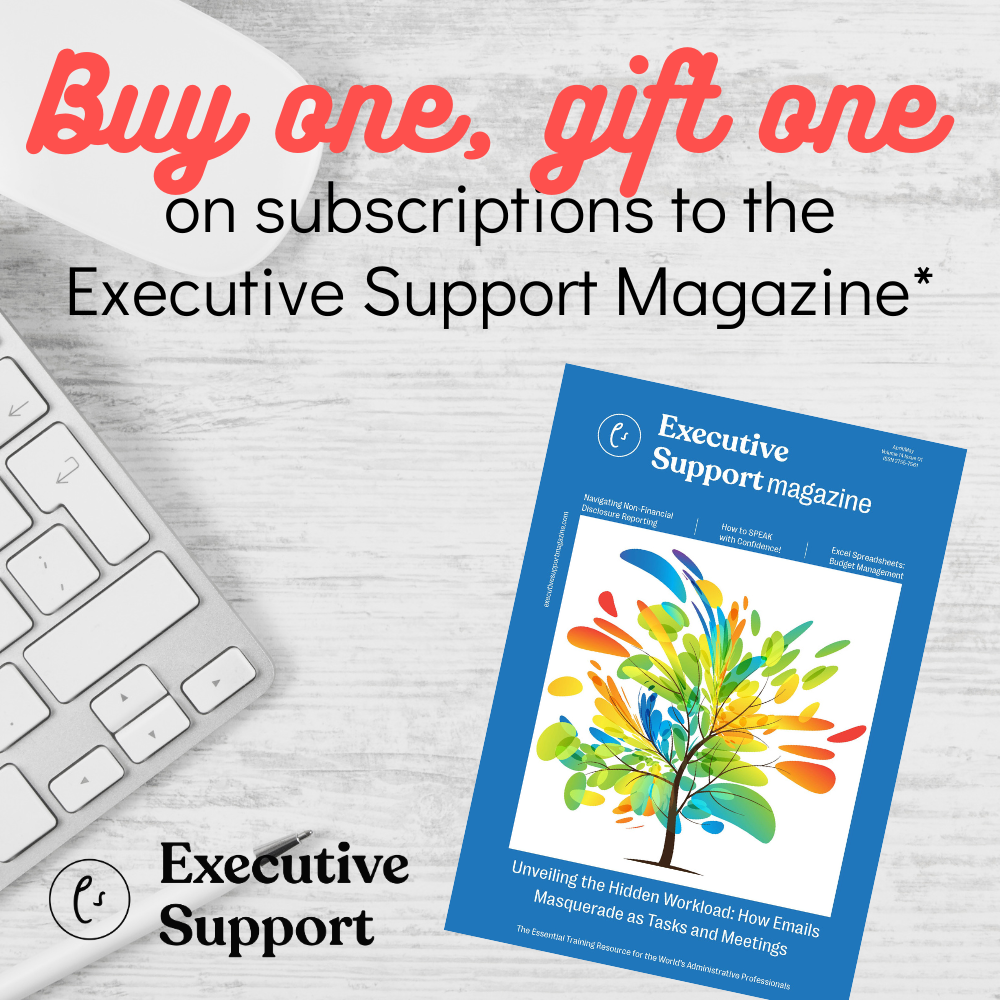
Including bonus tips by Jasmine Freeman
Many people think a career-focused “performance brief” as something they either once did to obtain their current position or as an annual “ho-hum” requirement. The Career Portfolio is not about job hunting. It is a professional journal created to detail how “You, Inc” have capably and measurably demonstrated professional contributions to your organization and leader’s overall successes. The Portfolio captures current-and-building skill levels, recognition by others, shows career enhancements, development activities and accomplishments.
Whether you decide you want to move up in your chosen field, move out of the profession, or stay where you are, a Career Portfolio will be a valuable asset to you. It’s not enough to just “tell” people what you do; or to give them a resume. Especially in today’s job market, where you might be competing against 10 other top-notch Assistants interviewing for one job!
Let’s say you have a great position, work for a good leader, like your environment – you probably think you can get by simply by continuing to do a good job and excelling at what you do. The truth is, that isn’t enough today. With organizations working meaner and leaner, every employee must consider that they are working every day to keep their, or even compete for, their job!
Why would it be beneficial to create a Career Portfolio?
- Shows you are proactive
- You’d have a hard and soft copy of your accomplishments; permanent career history catalogued
- “Shows” people what you are capable of doing
- A tool to receive higher levels of recognition
- Shows your creativity
When and where can you use/introduce your Career Portfolio?
- During your performance review
- When writing your professional development plan for the upcoming year and tracking accomplishments
- Competing for an internal position
- Updating a new leader of your skillset/talents and experiences
- Asking for additional responsibility
- Outside work – especially when trying to obtain a leadership role
- When being considered for committee work
- External interviewing
Ways you can build your skills and add value to your Career Portfolio
- Constant updates to your Career Portfolio
- Think of it as a showcase of “You, Inc”
- Be a catalyst for change in terms of job descriptions and salaries
- Encourage feedback from several people in your organization with whom you regularly interact
- Know your strengths, use them
- Know your gaps, work on them
- Be a generalist or a multi-specialist
- Take people you admire to lunch
- Always continue to learn and grow in your craft – stay current
Now that you know the importance of why you need to build your Career Portfolio let’s talk about how and what you can include in your Career Portfolio. Remember, this is just a listing of suggestions. Don’t feel obligated to put everything you see listed here in your portfolio and certainly don’t let it limit you to only putting these items in your professional portfolio.
What can you put in this portfolio?
- A professional 4 x 6 or 3 x 5 photo of yourself
- Record of any outside work; volunteer or committee work (including examples of leadership roles or other areas of your expertise)
- Thank you notes from customers or clients on a job well done
- Thank you letters from internal divisions and executives on a job well done
- Examples of your work: graphic work, spreadsheets (be careful not to divulge confidential company information)
- Past evaluations (no more than three years back)
- Your personal mission and vision statement
- Resume (keep extra copies on hand)
- Emphasize results and accomplishments versus job duties
- Copies of Certificates of Completion from learning courses relevant to your profession
DESIGNERS PLEASE MAKE BLACK BOX JUST A TINTED COLOUR, THANKS AND INSERT HERE
What should you use to display your Career Portfolio?
Be sure to place this information in a nice binder or casing. Many Assistants have gone above and beyond by getting a leather portfolio embossed with their initials on it. You may feel more comfortable using a three-ring binder. Remember the outside packaging also represents you and will send a message to the person viewing your portfolio. Think clean lines, professional-looking, and quality products. Also think about the font style and size you will use – again keep it professional. Consider the details right down to the type and color of paper you will use. Sheet protectors will provide your portfolio protection from the hands that will be reviewing it as well as easy access to update your information.
For ease of browsing, it is recommended that you tab your portfolio. This is another way to add your own personal touches to your portfolio. Some creative terms or tab names used have been:
- Employee Advocate
- Credentials
- Strategic Partner
- Visual Identification (photo)
- Career History
- Specified Training
Extras can include a Table of Contents, cover letter, an informational CD or a link to the soft copy version of your Career Portfolio.
This is a tool to showcase your talents and create conversation with your leader or interviewer. Give them a chance to ask you questions – you don’t need to put every detail in the portfolio (think “at a glance”) as your reader will likely thumb through the pages. Avoid text-heavy pages.
Note: Do not leave this portfolio with the interviewer or others reviewing your portfolio. That is why you may wish to keep a copy of your Career Portfolio online.
Having a physical representation of your Career Portfolio is important and it shows an executive that you are serious about your career and you care enough to take the time to nurture this portfolio and showcase your work professionally. You won’t want to make a new portfolio with each interview or chance the possibility of the reviewer losing or damaging it. Yet, you do want to have a way to showcase your work to someone who wants to have more time to review your portfolio. The perfect way to “leave” your information with someone is to keep a digital version of your Career Portfolio; available online or in PowerPoint as a soft copy.
Keeping a Digital Career Portfolio
Jasmine Freeman, Vice President and Chief Executive Assistant
There are multiple ways of showcasing your work in a digital format for your reader. Here are just a few examples:
Blog
- Link directly to your work on the World Wide Web
- Your own space, you aren’t relying on another site owner
- Great space to house testimonials of your work
- Online resume
- Excellent search-ability of your resume if you are looking but a necessary tool for all business professionals (searching or not)
Beyond.com
- Online placement/job search site
- Excellent visual representation of your resume with Career Portfolio Tool
SlideShare or Prezi
- PowerPoint style presentations
- Work with other sites such as LinkedIn
Be careful when using sites that don’t belong to you when showcasing your information. If they change their terms of use or even shut down the site you could potentially lose your portfolio and all that hard work you put into it will have been for nothing. I do recommend that you use tools like LinkedIn or Beyond.com but I recommend that you don’t limit yourself to just one for this reason (don’t put all your eggs in one basket, so to speak).
Start simply with a PowerPoint presentation that you can link to testimonials featured on your LinkedIn profile (Recommendations & Endorsements) or directly to your visual Career Portfolio on Beyond.com. You can also hyperlink your reader directly to your written work (blogs) and video work (YouTube) if applicable. The options are endless and it’s all unique to your own skills and abilities. To house your slideshow online you can utilize such tools as SlideShare or Prezi. LinkedIn also works with such presentation sites to add your online portfolio directly into your online resume.
For the more advanced user, I suggest keeping a blog with your own portfolio showcasing website. This can link to your profiles on sites like LinkedIn or Beyond as well as show off your design/website management abilities (which can come in handy, especially in smaller offices that keep a web master on staff).
With all of these tools comes a certain amount of maintenance. My recommendation is to keep a folder for portfolio updates in your follow up. Make updates to your preferred tools and hard copy version 3-4 times per year when you aren’t currently on the market and more frequent attention when you are job searching.
Wishing our best to you in the creation of your very own Career Portfolio!













